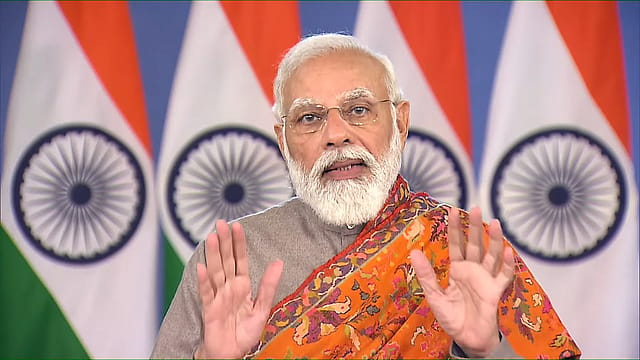Cabinet nod to ₹4,797 cr PRITHVI scheme; international airport for Ayodhya
ADVERTISEMENT

The Prime Minister Narendra Modi-led Cabinet today took a slew of decisions relating to the earth sciences ministry, the aviation and hydrocarbon sectors and also signed MoUs in the areas of carbon emission and satellite.
The Cabinet approved the “PRITHvi VIgyan (PRITHVI)” scheme of the earth sciences ministry for implementation from 2021-26 at ₹4,797 crore. The Prithvi scheme will augment and sustainan long-term observations of the atmosphere, ocean, geosphere, cryosphere and solid earth to record the vital signs of the earth system and change.
It'll also develop modelling systems for understanding and predicting weather, ocean and climate hazards and understanding the science of climate change. Additionally, it'll also explore polar and high seas regions of the earth for any new phenomena and resources. It'll also develop technology for exploration and sustainable harnessing of oceanic resources for societal applications.
The scheme encompasses five ongoing sub-schemes -- Atmosphere & Climate Research-Modelling Observing Systems & Services (ACROSS), Ocean Services, Modelling Application, Resources and Technology (O-SMART), Polar Science and Cryosphere Research (PACER), Seismology and Geosciences (SAGE) and Research, Education, Training and Outreach (REACHOUT).
Nod to Ayodhya International Airport
The Cabinet has also approved the proposal to declare Ayodhya airport as an international airport and naming it as “Maharishi Valmiki International Airport, Ayodhyadham”. The development is significant as it'll raise Ayodhya's economic potential and enhance its significance as a global pilgrimage site, opening doors to foreign pilgrims and tourists. Ayodhya, with its deep cultural roots, is strategically positioned to become a key economic hub and pilgrimage site.
December 2025
The annual Fortune 500 India list, the definitive compendium of corporate performance, is out. This year, the cumulative revenue of the Fortune 500 India companies has breached $2 trillion for the first time. Plus, find out which are the Best B-schools in India.
Cooperation in hydrocarbon
The Cabinet has also approved the signing of MoU between the petroleum & natural gas ministry and the natural resources ministry of the Republic of Guyana on cooperation in the hydrocarbon sector. The MoU will will boost bilateral trade, investment in both countries and help diversifying source of crude oil. It will also provide opportunity to Indian companies to participate in E&P sector of Guyana.
Notably, Guyana is the world’s newest oil producer. The country has reported discoveries of 11.2 billion barrels of oil equivalent, which amounts to 18% of total global oil & gas discoveries and 32% of discovered oil. As per OPEC World Oil Outlook 2022, Guyana is projected to see a significant ramp-up in production, with liquids supply growing from 0.1 mb/d in 2021 to 0.9 mb/d in 2027.
Net Zero Carbon Emission
The Cabinet has also approved the signing of an MoU between India and the US for International Development/India (USAID/India) for supporting railways to achieve its Net zero carbon emission mission by 2030. The MoU provides a platform for railways to interact and share the latest developments and knowledge in the railway sector. The MoU facilitates utility modernisation, advanced energy solutions and systems, regional energy and market integration and private sector participation, among others.
Joint Small Satellite
The Union Cabinet has also approved an MoU between the Indian Space Research Organisation (ISRO) and Mauritius Research and Innovation Council (MRIC) concerning cooperation on the development of a joint small satellite, which will help establish a framework for cooperation between the two. Some of the subsystems for the joint satellite will be taken up through the participation of Indian industries. The estimated cost of the joint satellite is ₹20 crore, which will be borne by India.
